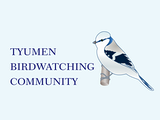search
classification
|
basic information
|
video
|
reports |
Eurasian Dipper
Cinclus cinclus (Linnaeus, 1758)

|

|
|
|
2017-08-24
Kara-Unkur, Naryn Oblast |
© Tatiana Menshikova
|
|
Description
The Eurasian Dipper is a water-living Thrush-sized bird with a dense constitution, short wings and tail. The adult male and female have dark-brown upper head, neck and fore part of the back. The rear part of the back is grey with scaly pattern not visible from a distance. The uppertail are grey with the slightly brown tone. The coloring of the underparts of the different subspecies large varies from the almost white to brownish. The flanks are brownish grey tinged; the flight and tail feathers are brownish-grey. Male and female are similar. The seasonal differences of plumage are absent. Juveniles on upperparts are lighter than adults, brownish-grey with expressive scaly pattern formed by the dark-brownish edges on the wing coverts; the light color of the throat and abdomen are also with dark scaly pattern from the throat to undertail. In autumn the juveniles are similar on adults. The Dipper flies rapidly and straight, low on water. Weight 50-85 grams, length17-20, male wing 9,2-10,1, female wing - 8,2-9,1, wingspan 25-30 cm.
Biology
The Eurasian Dipper is common resident. It inhabits rapid mountain steams and rivers with rocks and stones, preferring smaller streams with bankside trees or shrubs, at 1200-2800 m in Tien Shan ridges (but at 600-1500 m in Karatau) and at 1000-2200 m in Altai. In winter it occurs on plains in unfrozen water (including springs and ice-holes), departing these areas in March – early April, or in late April in Altai. It breeds separately at least 100 m one from another. Nest is built in the rock or bank cavity, among the roots, on the big stones along the river, under the bridges, or often in the rocky ledges behind the waterfalls. Both partners build it from the moss mixed with grass and rootlets, and lines it with dry grass and leaves, for one or two weeks. Clutches of 4-7 (often 5) eggs found in April – early July. Female incubates for 15-17 days, male sometimes feed it. Both parents feed juveniles, which fledge at 23-25 days between late May and late July. One brooded, but in Talasskiy Alatau some pairs may be double brooded. Repeated breeding after the nest losing is common (up to three attempts recorded). It extracts the food, diving in water. Thus it opens the wings so that a current pressed them to a bottom. It eats the larvae of the water insects, also catches the floating invertebrates. Willingly picks the food near the water, on the coast, stones, among the seaweed. Autumn movements starts in September – early October.
References
Э.И.Гаврилов. "Фауна и распространение птиц Казахстана". Алматы, 1999. Gavrilov E. I., Gavrilov A. E. "The Birds of Kazakhstan". Almaty, 2005. "Птицы Казахстана" том 3. Алма-Ата, "Наука" КазССР. 1970. В.К.Рябицев. "Птицы Урала, Приуралья и Западной Сибири". Екатеринбург, Изд-во Уральского университета, 2000. А.Ф.Ковшарь "Певчие птицы". Алма-Ата, "Кайнар", 1983.












